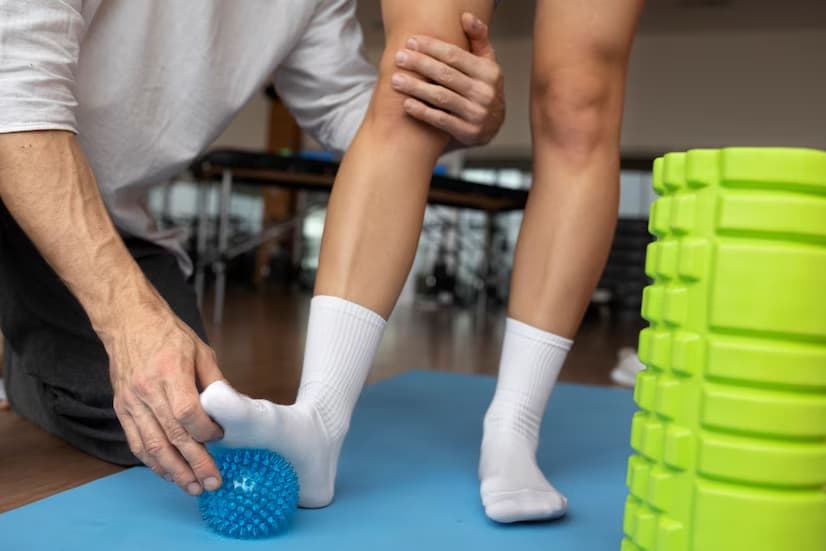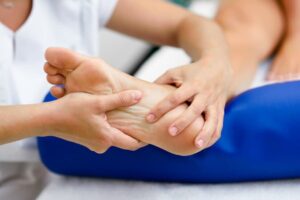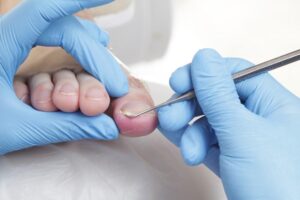Discover how plantar fasciitis insoles can offer relief and improve foot health in NZ by visiting the New Zealand Podiatry Association’s blog.
Step into the realm of orthotics, where the fusion of comfort and science transforms foot health! Have you ever pondered the magic behind custom-made shoe inserts and their ability to relieve foot pain and discomfort? Explore their remarkable benefits in enhancing mobility and overall well-being.
Varieties of Orthotics
Orthotics encompass a diverse range, categorized into three distinct types:
- Rigid Orthotics: Engineered from robust materials such as plastic or graphite, rigid orthotics excel in controlling foot function. Ideal for individuals grappling with overpronation or supination, these orthotics provide steadfast support and corrective measures;
- Soft Orthotics: Characterized by their shock-absorbing properties, soft orthotics alleviate pressure on tender areas, making them indispensable for conditions like diabetic foot ulcers or arthritis. They offer plush cushioning and comfort while promoting natural movement;
- Semi-rigid Orthotics: Striking a harmonious balance between support and flexibility, semi-rigid orthotics cater to individuals with active lifestyles or athletes seeking dynamic equilibrium during physical activities. These orthotics facilitate fluid motion while ensuring stability and alignment.
Advantages of Orthotics
The benefits conferred by orthotics extend far beyond mere pain relief. By rectifying anomalies in foot mechanics, such as flat feet or high arches, orthotics mitigate strain on muscles and tendons, thereby averting injuries and enhancing overall foot function.
Through their adept provision of support and alignment, orthotics foster optimal weight distribution and mitigate pressure on vulnerable areas, culminating in enhanced comfort and mobility.
Common Foot Problems Alleviated by Orthotics
Orthotics serve as indispensable allies in combating an array of foot ailments, including:
- Abnormal Shoe Wear: Orthotics rectify discrepancies in weight distribution, prolonging the lifespan of footwear and alleviating discomfort stemming from uneven wear;
- Heel Pain: Conditions like plantar fasciitis or Achilles tendonitis find respite through orthotics’ adept cushioning and supportive attributes, expediting healing and assuaging pain;
- Bunions: Orthotics promote proper alignment, thus reducing pressure and discomfort associated with bunions;
- Calluses: By distributing weight evenly, orthotics mitigate friction and pressure, thwarting callus formation;
- Chronic Knee or Low Back Pain: Orthotics facilitate optimal alignment, thereby reducing strain on the lower extremities and ameliorating pain and discomfort.
The Role of Podiatrists
Podiatrists possess specialized expertise in assessing foot mechanics and prescribing bespoke orthotics tailored to individual needs. Through evaluations of foot structure and gait patterns, podiatrists discern underlying issues contributing to foot pain and recommend appropriate interventions.
Furthermore, they provide ongoing monitoring and adjustments to ensure orthotics effectively support long-term foot health and functionality.
Exploring Further Advancements in Orthotics
Recent advancements in orthotics have led to innovative designs and materials, enhancing their effectiveness in addressing foot health issues. Some notable developments include:
- 3D Printing Technology:The advent of 3D printing has revolutionized orthotics manufacturing, allowing for precise customization and faster production times. This technology enables orthotists to create highly personalized inserts tailored to the unique needs of each patient;
- Smart Orthotics: Integration of smart technology into orthotics has opened up new possibilities for monitoring and optimizing foot health. Smart orthotics can track movement patterns, provide real-time feedback, and even adjust their support levels dynamically based on the wearer’s activity;
- Biomechanical Analysis: Advances in biomechanical analysis techniques have improved our understanding of foot mechanics and how orthotics can best address specific issues. Orthotists can now utilize advanced imaging technologies and computer simulations to design orthotics that precisely target problem areas and optimize biomechanical function;
- Environmentally Sustainable Materials: With growing awareness of environmental concerns, there’s a rising demand for orthotics made from sustainable materials. Manufacturers are exploring eco-friendly options such as recycled plastics, plant-based resins, and biodegradable polymers to reduce their environmental footprint without compromising on performance;
- Collaborative Care Models Interdisciplinary: Сollaboration between podiatrists, orthotists, physical therapists, and other healthcare professionals is becoming increasingly common. This holistic approach ensures comprehensive assessment and treatment of foot issues, leading to better outcomes for patients.
Brief Tips on How to Choose Insoles:
- Consultation with a Specialist: Before purchasing insoles, it’s advisable to consult with a specialist, especially if you have significant foot issues like flat feet, plantar fasciitis, or arthritis. A specialist can provide recommendations regarding the type and level of support you need;
- Fit for Your Footwear: Ensure that the chosen insoles fit your footwear. They should be thin enough to fit comfortably inside your shoes while still providing necessary support and cushioning;
- Materials and Technologies: Opt for insoles made from breathable materials to prevent excess sweating and skin irritation. Also, look for innovative technologies like antibacterial coatings or arch support;
- Appropriate Support Level: Depending on your individual anatomy and needs, select insoles with the appropriate level of support. Some may require soft insoles for cushioning, while others may need firmer support to correct gait issues;
- Try Before You Buy: Before making a purchase, try on the insoles in your shoes to ensure they fit properly and don’t cause discomfort. Take them for a test walk to assess how they affect your gait and comfort level;
- Gradual Adaptation: If you’re new to using insoles, start with short wearing periods and gradually increase the time to allow your body to adjust to the new support.
By following these tips, you can choose the right insoles to address foot issues and provide comfort while walking.
Conclusion
Orthotics stand as indispensable allies in the pursuit of optimal foot health and comfort. Remember, consulting with a podiatrist is essential to fully harnessing the benefits of orthotics and ensuring your feet stay happy and healthy for years to come. So, take a confident step forward into a world of enhanced comfort with orthotics by your side!


